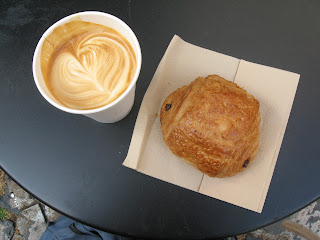Greetings, noble reader! For the past week, the Authoress of this Blog has been immersed in a sea of Excel tables, trying to trace the popularity of
Stew'd Cucumber,
Hunting Pudding,
Mock Turtle and
Soup Santé. And given that we are often most drawn to data we can visualize with the
Eye, I suspect that my avid Readers are desirious of another
Pye Chart. But as we can never do more Injury to Truth, than by discovering too much of it, on some occasions, I humbly beg leave to redirect the Publick's attention to the practices of yet another Society not hitherto discussed by the Authoress of this Blog. Permit me to educate you, dear reader, upon the
Centenary Club.
Actually, the club was nameless throughout their first 100 years of existence; only in 1795 did they rename themselves (rather smugly, after their own anniversary).
Anyway, this club supped more often than they dined, which in the 18th century was usually a lighter meal, with fewer options, than the fare usually discussed on this Blog. But what did the members do after supper was over? Well, just the same thing as any other club of red-blooded gentlemen did in 18th century London ... they gambled. Even though the Centenary Club's rule book states that
"Any member who shall at any time during the club come to be disordered by drink, shall forfeit 6d," I suspect that, given all the bets (made, inevitably, in bottles of claret) going on, they took a very liberal view of the term "disordered."
 |
Roulette was popular by the 18th century. But I'm not really sure
what games the Centenary Club played; the minute books don't say. |
The lists of wagers scrawled in the minute book's pages offer some interesting clues when it comes to that impossible question: what did members
talk about when they all got together? Many of the bets deal with rather quotidian events: the ages of other members, who will be elected "high steward," or whether the club will ever get out of debt. Other wagers provide a glimpse into the pretty merciless world beyond the tavern doors; one note attests that "the scaffolds belonging to Mr Wells and Mr Saxon would not be struck by the next month" (1701). King of gives a new meaning to the idea of a "polite and commercial people."
 |
| Public Executions: All fun and games for these guys? |
|
But over a long century and then some, one name got stuck in my mind. It was that of an otherwise unremarkable club member named William Innys, who took part in the club from mid-1717 to his death in 1756.
Who was this guy? Well, we know that he was a livery-man; in 1749 he was chosen to officiate as the master of the Worshipful Company of Stationers on Lord Mayor's Day. Contemporary printed documents refer to him as a
Bookseller. And the guy obviously liked to play fast and loose with his bottles of claret, as he happened to lay more wagers, and pay more fines, than anybody.
On May 5, 1736, Innys "paid ... a bottle of wine for laying a wager during the club time without having first obtained leave of the high steward, conforming to the order of the club."
And in December of that same year, it is written "Mr Innys do pay a bottle of wine for usurping upon the power of the high steward in declaring before his high steward."
A few years later, he is fined again (twice!) for using "reflecting" language. I could go on and on.
Yes, this William Innys was quite the rabble-rouser; kind of like that slightly obnoxious friend who can perpetually be counted on to get too drunk and spend the rest of the evening trying to push everyone's buttons. But you got to love him, because he's been in the club for a long time, and, well, he always makes the evening more memorable. And I confess, dear readers, that as I turned the pages of this old leather-bound tome, I began to develop an affection for William Innys. I grew concerned when I got to the 1750s and noticed that he was attending meetings with far less frequency. The last time he came to the club was in late June, 1755. In 1756, a written note confirmed my gravest fears.
William Innys .............. dead.
 |
| At the top of the page, you can see the club's note of William Innys's death |
But what kind relics, I wonder, might ECCO (Eighteenth Century Collections Online) hold onto for the sake of Posterity's Curiosity? I eagerly typed in William Innys's name and found this:
 |
| Yep ... and it was held over dinner |
That's right; I guess they auctioned off all of Innys's books after his death. Given that his life was more or less bound up with the printing industry, it isn't very surprising that Innys was quite the literary man. He was an avid reader of Cervantes (Don Quixote) and Milton (Paradise Lost) but seemed to have no taste for the Richardsonian epistolary epics that took the 1740s by storm. Neither was he a stranger to science, having owned Newton's Principia Mathematica, the anatomical work of Boerhaave and von Haller, and copies of the Royal Society's Philosophical Transactions. His books suggest that he was a religious man (he owned various sermons and devotions) but also was a lover of history and natural philosophy.
Innys happily straddled the worlds of the Ancients and the Moderns alike.









































